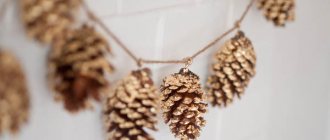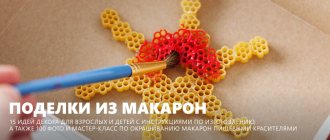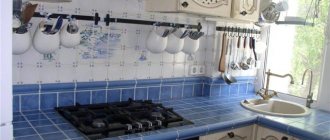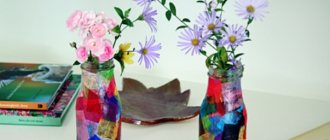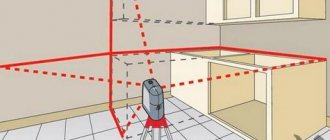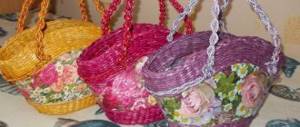To the teacher
The long-awaited summer has flown by. Soon the branches of the trees outside the windows will turn sadly black, and the gray low sky will be reflected in the drops of rain on them. And then the herbarium will help dispel the autumn blues and bring back memories of a bright sunny summer. Especially if this herbarium is made with your own hands. So don't waste time during these last warm autumn days.
You can collect a herbarium either independently or with children. After all, by participating in this process, the child becomes more familiar with the world around him and develops his powers of observation. In addition, the design of a herbarium contributes to the development of accuracy, composure, and the ability to work with literature. And for us, adults, communication with nature will help us plunge into childhood and restore peace of mind. So, how to make a herbarium?
How to collect a herbarium? To avoid disappointment, this should be done in dry weather. Wet plants become more fragile, which means they can easily crumble when creating a herbarium. We will need the following: a tool for digging up plants (a small shovel, a metal children's scoop or even a strong spoon), a herbarium folder - a kind of press for collected plants.
You can do it yourself. For example, Yulia Kasparova, in her article on the herbarium, advises folding two sheets of A3 cardboard, making holes in the corners, and threading thick laces or braid into them. The folder is ready. Place old newspapers inside into which you will place the neatly straightened plants.
You will also need a pen and paper to create temporary labels. A plant identification atlas can also be useful, especially if your knowledge of the plant world is limited.
Now you are ready to go on a “scientific expedition”, but first remember an important rule: collecting a herbarium should not turn into mindless destruction of nature.
How to design a herbarium? Do-it-yourself herbarium There are many ways to dry plants, we will look at the most common ones.
Method one. Drying plants in newspapers as mentioned above. Place the newspapers one on top of the other, cover them with paper napkins and weigh them down with something heavy. Change the wipes every few days. Be careful not to overdo it. Perhaps two secrets will be useful to you: you can dip the leaves in a solution of water and 20% PVA glue, then they will become denser; To ensure that blue and cyan flowers retain their color, immerse them briefly (no more than 1 minute) in denatured alcohol before drying.
Method two. Dry with an iron. The main thing here is not to overdo it, otherwise the plants will lose their natural color. We run the iron over the plant wrapped in paper a couple of times. After a few hours we repeat the procedure.
After the plants are dried, we prepare an album for the herbarium. We carefully attach the dried plant to A3 sheets of paper with narrow strips of paper. Glue is applied only to the ends of the strips. If the herbarium is properly designed, then in the lower right corner there should be a label in Russian and Latin, which contains the name of the plant, its location, information about the place and time of collection. Then the sheets are lined with parchment and collected in a folder.
To make it more interesting, the collections can be diversified: collect a separate herbarium from leaves, flowers or cereals. Of course, it is important to strictly adhere to all the above rules if, for example, we are preparing a herbarium for a school. A home herbarium can be embellished a little: make a frame, draw a suitable background. Over time, it’s easy to learn how to make crafts from a herbarium and learn how to create wonderful panels from it. Doing this together with other family members will help unite the family, and a warm summer will settle in your home for a long time.
Herbarium: collecting and arranging your favorite plants
Summer has always been famous for the richness of various herbs and flowers, so this is the best time to collect plants for the herbarium. You can collect your favorite plants anywhere and anytime. Then the herbs and flowers are dried in a special way, and then you can place them wherever your heart desires - in a special herbarium album or in a frame under glass. By the way, dried plants in a frame will be an excellent addition to your interior!
- We recommend collecting plants for your herbarium in dry weather, preferably after 11 a.m., this way there will be no dew on the plants, which causes dark spots to appear on the leaves.
- Choose only fresh and clean plants without damage. It is important that there are no signs of wilting.
- If you want to preserve the color of the plant after drying, then it should be taken at the very beginning of flowering.
Drying plants
The simplest and most traditional way of drying plants for a herbarium is to use a press. First you need to place the plant between the pages of a book, and then place it on a shelf between other books. But this method may spoil your book a little, since moisture from the plant can transfer to the pages of the book. Therefore, before placing the plant on the page, we advise you to place ordinary paper, preferably soft, between them.
There is another way: put all the plants on a couple of sheets of plain paper, cover it with another layer of paper, and carefully place any flat object or wooden board on top. But if among your plants there are flowers with delicate petals, then they should be dried separately from everyone else.
You can also make a press yourself that will serve you for a long time. To do this you will need two pieces of plywood, thick cardboard and screws.
Imagine that you are reading a magical book with photos that will make your soul freeze. Page after page takes you to unknown lands, tells a story about something wonderful and how beautifully this world works. Who is the author of this work? Nature. And the name of the masterpiece is “Herbarium of leaves with flowers.” Let's read this book together to understand why it was written? Who is it intended for? And for those who have a desire to try their hand at it and help the Author continue this grandiose work, we invite you to learn how to make a herbarium with your own hands.
Let's find out together: what a herbarium is and what its goals are; little secrets of the herbalist: suitable plants, what conditions for drying a particular plant, how to distribute the herbs; how to collect a herbarium and what are the rules for its design.
Drying leaves
The simplest method of drying in natural conditions is considered to be drying between the pages of a book. If the foliage was not wet and too juicy, this option is ideal.
In order not to spoil an expensive publication, first place a layer of paper between its sheets and the sample.
The collected specimens are placed to dry in one layer. They are aired daily and transferred to other sheets of the book to avoid mold. The top of the book can be pressed down with a press so that the samples do not bulge. After 5-10 days you can start creating a collection.
Related article: Volumetric elastic band with knitting needles for a scarf: description for beginners
The next common drying method involves using an iron. The collected samples are placed between two sheets of white paper and ironed at medium temperature. You need to be prepared for the fact that the exicate (dried sample) will lose its natural color.
About the herbarium
It is interesting that the first memories of a herbarium made by someone do not speak about the scientific purpose of the collection, but have romantic roots.
The thing is that in such an unusual way the lovers preserved signs of attention. They wanted to dry the beautiful flower given to them to remember their loved one. But in the 15th century, books about plants began to appear. Some of them were true, some were myths and legends. And it was not possible to take photographs then. Therefore, the production of the herbarium was carried out using more or less accurate drawings, from which it was sometimes difficult to identify a particular plant. But in the middle of the 16th century, scientific works suddenly began to appear with examples of glued dried plant parts.
The appearance of the botanical collection has remained virtually unchanged since then. But they began to collect it more often at home for children at school, and even for kindergarten. Why? Who needs it? And what is the purpose of such a collection?
How your herbalist will look depends directly on what your goals are for compiling a herbarium.
Classification:
- Special
. For example, a herbarium for an elementary school. - Systematic
. Any system is taken as a basis. For example, by genus or family, the same colors of a dried plant, or a collection in the order of letters in the alphabet. - Periodic
. Organized according to the periods in which the materials were collected. - Thematic
. Medicinal, cereals, weeds or from indoor flowers, etc. - Morphological
. When material of the same type with modified organs is dried. - Floral
. All plants of a certain region.
Unusual option
Sometimes the interesting task of compiling a collection of plants begins to be given to children much earlier. To make it interesting for your child to look at the herbarium for kindergarten, we suggest you decorate it using a very interesting technique - casts.
A cast of the sheet can be made on salt dough or plaster. In the first case, the dough is kneaded according to the basic recipe: mix fine salt and flour in equal proportions, carefully add water until a plastic mass is obtained.
Roll out small dough medallions. Press the leaves into them using a rolling pin with the side with the veins. Dry the dough, then remove the leaf and paint the surface of the print.
The second version of the cast is made of plaster. This technique is not that difficult, but the result will be a beautiful and durable picture. To make it, you will need:
- plastic bag;
- plastic plate;
- plasticine (can be old);
- gypsum, water;
- collected leaves;
- dye.
The process is very simple, the photo instructions will allow you to see it in detail.
Please note that the print should be positioned with the design facing you.
Pour in and leave until completely dry.
We take out the plasticine.
We paint and varnish.
Such a panel will take its rightful place in the interior and will become the real pride of the baby.
Suitable plants
- Herbarium leaves must be healthy and undamaged by insects.
- Carefully dig them out along with the roots; free the rhizome from the ground.
- You can make a high-quality and durable herbarium from leaves only if you collect them during the day in warm sunny weather.
- The sample must have blooming flowers, preferably fruits too.
- Don't limit yourself to just one sample. It is advisable to collect in reserve so that you can choose the best option for making an herbalist.
Necessary tools and materials for collecting material to make a herbarium of flowers: a spatula, a knife, an excursion folder (they can be made from two sheets of plywood/cardboard), newspaper “shirts” for drying, a label and a pen.
What to note on the label: name of the plant, name of the area and its designation (forest, field), date, who collected it (if there was a group trip, and if you collected it yourself or with your children, you don’t have to make such a note).
Conditions for drying a particular plant
The collected roots, so that they dry faster, are cut lengthwise with a sharp knife.
Flat drying is the most common. The material dried in this way can be used for decorative appliqués and albums.
How to make a herbarium yourself using the flat drying method.
Step by Step Actions
- What you need to consider before drying flowers:
Plants are collected only in dry weather; — It is advisable to find a place away from the roadway; — The time to choose is when the air has warmed up; - Only a fresh plant is suitable, without any signs of wilting. - We choose a suitable book, such that our leaves can be placed freely on the page. Don't forget, if you don't want to ruin the book, and the plants dry out faster if you put them with clean paper on both sides.
- You need a press that will press the book. These may be other weighty printed publications.
Do you want your plants to dry quickly and reliably? Then it’s worth changing the paper every day for a week to clean and dry.
When the leaves dry, they release moisture, which is absorbed by the paper. If you do not change it, this will affect the quality and appearance of the material.
In the future, you can remove the plants from the book and store them in a dark place. Of course, losses are inevitable. But they can be reduced.
How long does it take to dry plants? A small amount of material will be ready in 2-3 weeks. For dense and voluminous ones, a month is needed.
In addition to the usual book, you can use a hot iron. How to dry them correctly? Lay the plant flat on a sheet of paper and cover it with another sheet. Press with an iron and then iron.
Interesting!
Blue/light blue flowers will not lose their brightness if placed in denatured alcohol for half a minute.
The density of the plant is achieved by letting it lie in a solution of PVA and water (4:1).
A solution of glycerin and water (60 degrees), 3:1, will preserve the shape of flowers. But at the same time, the solution makes the plants darker.
To dry the dandelion and prevent it from falling apart, it is picked when the box with umbrellas has opened slightly. Thread a wire through the stem and lower the dandelion head for 10 seconds. into boiling water.
The whole process takes just a couple of minutes if you use the microwave at the lowest power.
How to dry bulk material, for example, what to do with a flower bud? To do this, parts of trees or flowers are placed in boxes and covered with sand or silica gel. In this case, the buds should look down.
How to properly dry flowers for an outdoor herbarium? You need to do this in the shade. The flowers have their buds facing down. And the plants should not touch each other.
Educational facts
We already know how to make a herbarium on our own and without outside help, but it would not hurt to familiarize yourself with rare data regarding this activity.
For example, many people know that the method of drying plants between sheets of paper was invented by Luca Ghini. The invention of the term itself belongs to another person - Joseph Tournefort, a traveler and botanist from France.
No description in words can replace a herbarium sheet. This is what Carl Linnaeus thought. And it was he who determined the technology for collecting plants, which has undergone virtually no changes to this day.
By the way, great people also collected the herbarium. The first leaf in Russia was dried by Peter the Great, adding a short inscription to it: “Torn of 1717.”
How to distribute herbs in an album
Making a herbarium begins with mastering the main rule: all plants are attached to the sheets of an album, and they are covered with tracing paper (there are special albums for herbariums that can be bought at a bookstore, in the stationery department).
To mount the material, you can use threads: white or green, paper straws and glue. But under no circumstances should you use plaster or tape.
How many plants should there be to make up a collection? What size the collection will be is up to you to decide. You can even compile many volumes.
If you don’t have a special album, you can make it yourself using regular album sheets and transparent files.
But in order to arrange everything beautifully, it is advisable that there be one type of plant on one sheet. If it is larger than the page, the material can be trimmed in several places.
Important! Each page must be signed.
How to make a herbarium with a child so that the baby will also find it interesting? You can decorate everything creatively by adding drawings.
See a few more ideas for creativity, perhaps this unusual design will inspire you to do something interesting and creative:
Collecting and drying plants is a fun activity for the whole family
If you are not a biologist or a student of the relevant department, before making a herbarium, you should still ask yourself whether this activity will bring the expected pleasure. People experienced in this matter assure that everything will happen, especially if you involve your baby in this exciting pastime. When a child takes part in collecting plants, he remembers what they look like and what they are called.
Both children and adults will be interested in learning about the origin of such unusual names as shepherd’s purse, celandine, coltsfoot. For example, not everyone knows that celandine received this name because of its properties that promote the rapid healing of wounds and abrasions. And if you look closely at the leaves of a shepherd's purse, you will notice their resemblance to the hearts or tiny bags of shepherds.
How to organize and organize a meeting
But that is not all.
Let's talk about how to design a herbarium not only for school, but also for decorative purposes. There are 2 options:
- First. Glue one plant in the middle onto a sheet of paper.
- Second. Select the size of cardboard to which to attach the flower arrangement with glue, taking into account the color scheme and shape of the material.
If we are talking about how to make a herbarium for school, the first option is suitable.
A herbarium is a collection of dried plants with signatures on the labels. You can collect whole plants: with roots and flowers, or you can dry only the flowers or just the leaves. With preschoolers or junior schoolchildren, you can start with a simple leaf herbarium, and high school students can be offered more complex options with digging up the entire plant.
How to properly attach and store a herbarium?
Remember: you cannot firmly attach the plant itself or its parts to a sheet of paper. Otherwise, your copy will break even with a slight bend.
We attach it so that the leaf (or flower) does not dangle on the paper, and its parts do not hang down.
Thick roots and shoots are sewn on with soft-colored cotton threads. The stitches should be separate, tied with a double knot on the front side of the herbarium sheet. On the other hand, each stitch must be coated with thick glue. This action will prevent the thread from slipping; you should not pull it from the reverse side between the stitches, because this may damage the underlying herbarium sheet.
Thin parts of the plant are secured using strips of paper. The strips, in turn, are attached to whatman paper.
The plant should not be fixed by the tip. This will lead to breakage. A strip of paper is usually located near the base of the leaf (under the flower).
The label is placed in the lower right part of the sheet, although it can be placed in another place. You can store mounted sheets in shirts (newspaper, craft paper).
Many collectors advise additionally capturing the herbarium. The photo, you see, is stored longer, although it has no true value.
We collect
- It is necessary to collect plants and leaves for the herbarium in dry weather. If you collect leaves that are wet from rain or dew, they will take a long time to dry and break easily during processing.
- If you want to dig up the entire plant, you will need a small shovel, hoe or knife.
- Take care of the bag or bag in which you will put the plants. You can take with you a folder with files where the child will put leaves and flowers, and sticky notes to mark on them where you collected these plants and what they are called.
- Plants brought home must be carefully cleared of soil, the leaves and inflorescences straightened and prepared for drying.
Drying
- It is best to dry plants under a press - a clever device for smoothing and drying leaves and flowers can be purchased in specialized stores.
- A book or iron can also be used as a press.
- If you fold leaves inside a book the old-fashioned way, line them with tracing paper or paper - otherwise they may leave stains on the book pages.
- If you iron the leaves, iron them on both sides and through newspaper. This method is the most dangerous, because if you overexpose the leaf under the iron, it will change color or shrink, so rare plant specimens should not be dried using this method.
- Plants with leaves and fruits can be collected in bunches and hung to dry on a clothesline.
We formalize
- Collected plants, flowers or leaves can be placed on A4 sheets. To do this, they need to be carefully “planted” on glue (a few drops are enough) or secured with thin strips of tracing paper or paper, intercepting the plant sample in several places.
- If individual shoots of a plant extend beyond the boundaries of the leaf, they can be carefully bent.
- It is convenient to collect sheets with glued plants into an album - it is most convenient to use transparent files and a folder with a binder.
Several design options:
Herbarium in a photo album
A convenient option for decorating a herbarium is a photo album. Small leaves and flowers can be glued onto 10 x 15 paper and placed in photo pockets. Such a mini-album with leaves of trees will look especially impressive: birch, aspen, oak, maple, ash.
If you don't want to glue anything, buy a photo album in which the photos need to be placed under the film and instead of pictures, place leaves and labels with signatures there.
Herbarium-clamshell
Sheets with plants glued to them can be laid out in a row and fastened together in the form of a folding book. When unfolded, such a herbarium will look like a long ribbon, and when folded, it will be no different from a standard herbarium folder.
Flower-leaf composition
This unconventional type of herbarium will allow you to place different leaves and flowers on one sheet of paper and create an original composition from them. A child can show his imagination and paint some of the leaves in other colors or add missing buds or fruits to the leaf using watercolors.
Let's sign
We use small labels to label plants. Have the child write down all the information he knows about the plant on a separate piece of paper and place the label in the lower right corner of the herbarium sheet.
What is usually written on the herbarium label? The name of the plant and the family to which it belongs, information about the place and time of collection of the plant.
If you have identified the species and family, feel free to indicate them on the label. Captions can be varied: if you know the medicinal properties of a given plant or some interesting facts about it, feel free to add them to the signature. Official botany does not welcome this, but entertaining - yes!
- Buy your child a beautiful illustrated encyclopedia in which he can independently search for the names of plants and shrubs whose leaves and flowers he collected.
- Set aside some of the collected natural materials “in reserve”: dried leaves, cones, acorns, twigs and tree bark will be needed during labor lessons or on winter evenings for making crafts.
- Compiling a herbarium is not only “desk” work, but also walks through the autumn forest and an opportunity to communicate with nature. In the matter of collecting and compiling a herbarium, the main thing is not the result, but the process, so go hunting for leaves with an empty bag and a good mood!
A child’s collection of plants for a herbarium and subsequent drying and systematization operations is an excellent opportunity for productive communication between children and parents, when a walk in the park or forest turns into an exciting journey of knowledge. Older children and adults who dry the herbarium themselves also receive many positive emotions, and the knowledge gained in this way remains in their memory for a long time.
What is a herbarium?
In simple terms, a herbarium is a collection of dried plants. The first mention of herbarium collection dates back to the 16th century, when paper began to be used for collecting and drying plants as a material that absorbs moisture from plants well. And today in stores you can find suitable tools for collecting herbarium: paper for gluing samples, labels, newsprint or napkins for drying plants, folders, many types of glue, presses, etc.
The collection of herbariums is carried out by employees of various institutions: botanical gardens, institutes of botany and natural history. The largest collections of plants, numbering thousands of specimens, are located in different parts of the world: in the National Museum of Natural History, the New York Botanical Garden, the Botanical Institute. V.L. Komarova RAS, the Royal Botanical Gardens Kew have more than 7 million herbarium sheets. For scientific purposes, the collection, design and systematization of the herbarium is approached professionally: there are many rules that cannot be deviated from.
To collect a herbarium for yourself or for educational purposes at school, it is not necessary to follow all these scientific canons, but some rules will greatly simplify this work.
Herbarium of leaves. General definition of the concept
First of all, we note that a herbarium should be understood as a collection of dried plants prepared in accordance with certain rules. As you know, after the necessary samples have dried, they are laid out on sheets of thick paper.
Recently, a herbarium in biology has been created by almost all schoolchildren and students studying this subject as part of the educational program.
But the first herbariums appeared in the 16th century in Italy. They were invented by a doctor and botanist named Luca Ghini. By the way, he is also the founder of the world famous Pisa Botanical Garden.
Unfortunately, the herbarium created by the inventor himself has not survived, but the work done by his direct students has survived to this day. Considering the concept in a broader sense, it should be said that it is a process that includes storing a collection and processing it.
Note that all created herbaria are registered in a special international database called The Index Herbariorum. Each set of dried plants is assigned a unique code consisting of one to six English letters.
How to collect a herbarium?
Herbarium collection is divided into three stages:
- searching and collecting plants;
- drying of plants;
- systematization of plants, search for information and design of the herbarium.
Of course, you can collect plants spontaneously: for example, after seeing a beautiful specimen, or you can stick to a certain theme. For example, in botany or the natural world lessons, teachers can assign a summer assignment to collect herbariums on the following topics:
- weeds;
- healing herbs;
- poisonous plants;
- flowers/flowering plants (field, garden);
- houseplants;
- various forms of inflorescences;
- Asteraceae;
- and any other classifications.
Much attention should be paid to collecting plants for the herbarium: this largely determines whether it will be possible to make it and whether the herbarium will be of interest.
Rules for collecting plants for herbarium
- Plants are collected in dry weather; specimens that are not wetted by rain and dew are selected, otherwise it will be very difficult to dry them.
- The plant is collected as a whole, with all roots, rhizomes, tubers, bulbs, fruits and flowers, incl. aquatic plants.
- If the plant is large and it is not possible to collect it entirely, then those parts of the plant are taken by which it can be identified, identified, and get an idea of the whole plant.
- The branches of trees and bushes are not broken off, but cut off with a knife.
- The leaves of trees and shrubs are cut off along with the branches so that the arrangement of the leaves can be seen.
- Only developed plants with flowers (even immature) and fruits are selected for the herbarium.
- Plants are collected without damage or signs of disease and have not dried out from the heat.
- For dioecious plants, both male and female specimens are collected, and for monoecious plants, both specimens with pistillate and staminate flowers are collected.
- For each plant, several copies are taken in reserve.
Diseased plants should not be collected for herbarium
The dug up plant is immediately thoroughly cleaned of soil, adhering dirt and other plants and placed in a pocket between two sheets of paper. Immediately the plant straightens out in the same way as it grew:
- if the leaves lie one on top of the other, then a layer of paper is placed between them;
- one or two sheets are placed wrong side up to have an idea of both sides of the sheet;
- if the plant has large fruits or flowers, then you need to put cotton wool under them so that there is no breakage or damage when carried;
- if the plant is too long and does not fit on the sheet, then it needs to be folded in a zigzag, but at the same time there should be roots of the plant at the bottom, and the top should be facing up.
According to the rules, you need to include a label indicating the date the plant was collected, who collected it, as well as a description of the area:
- name of the locality or coordinates (can be viewed on mobile devices),
- relief,
- growing conditions: degree of illumination, humidity, side of the world to which the flower or leaves are facing, the density with which this plant occurs in the area, etc.
You can take photographs of the plant and its location.
To collect plants, it is best to make a special portable press, which consists of two chipboard plywood with holes drilled for ventilation, which can be tied together with twine or special laces. Sheets of paper that absorbs moisture well, for example, newspaper or writing paper, blotter paper, cosmetic wipes, etc., are placed inside this press. The dug up plant is placed between two such sheets, and additional sheets are placed between each plant so that the plants do not break each other.
After collecting samples at home, you need to start drying the herbarium. Drying is no less important than harvesting plants, because if they are not dried properly, the plants may not dry out, turn black, break off, rot, etc.
How to dry a herbarium?
Nowadays, parents even use microwave ovens to dry the herbarium, but it is better to dry the herbarium in its natural environment: in a press outdoors in the wind, in the sun, putting it indoors at night, or ironing it
through gauze or paper.
To dry the plants, you can use an already prepared press
: sheets of paper in which the plant lies, the so-called. The pockets, without turning them over, are stacked one on top of the other, having previously placed additional sheets between them - in fact, everything is like when collecting plants. But when drying, you need to change sheets of paper daily for new ones, because... the old ones become damp.
Large and voluminous plants, incl. flowers, can be dried in sand
. To do this, river or sea sand must be freed from all impurities: it is washed until the water is perfectly clear, and then hardened in an oven on metal baking sheets.
Of course, you can approach drying plants even easier by placing them between the sheets of a book
, but then, firstly, the book may deteriorate, and secondly, the dried plant may not retain its shape.
To find out whether the plant has dried, it is carefully lifted by the stem and, if it does not bend, it can already be drawn up on a herbarium sheet.
Herbarium under glass. MK Galachko
Or how I make jewelry with dried flowers. This topic has been covered on the Internet for a long time, so here, simply, the process is shown, as I do, with some tips that may be useful to someone. Especially at the beginning of your journey in needlework.
In such articles, more attention is paid to working with epoxy resin, but I want to put emphasis on preparing plants, since I myself have often been burned by this. Although, you might think that it would be so difficult to dry the leaves here. But I climbed into the botanical jungle, saw their “dryers” and ran away from there). My main problem was the loss of color of some petals. Maybe sometimes there was a problem in the resin, or in the fastening of the plants, but now I have reduced the percentage of dull flowers to a minimum, during drying and then, when they are already in the resin.
After collecting the plants, I place them on rice napkins. Personally, I gave up newspapers completely. Well, I’m not friends with them. Sometimes the petals cannot be separated from it, sometimes the imprints of letters on the petals are visible, this can also be due to a wet plant, but my such “flaws” are hidden by the rice paper. Then I cover the top of the plants with rice pads and place a small magazine on top. The plants remain “in the rice napkins” for several hours.
When the excess moisture is absorbed, I collect the plants in a press. I very rarely use books).
Here's a sandwich: corrugated cardboard, paper, plant, paper, cardboard, ...
I put everything in a press, which is tightened with screws; I bought it by accident in the children's department) And yet it came in handy).
After pressing, I store flowers with petals, especially blue flowers, for several days in a layer of fine sand. I pour a small layer of sand onto a tray, lay out the flowers and cover with a thin stream of sand, also not a large layer.
I store flowers in tightly closed jars
The press is especially good for “dense” plants, so as not to stack stacks of objects on top of each other).
On the left is a leaf dried in a book, on the right in a press.
Now to the decoration itself. I usually cover the workpiece with a white background, it can be polymer clay, but most often it is enamel paint. In finished form, the difference is not significant.
I lightly glue the plants to the base with decoupage glue. I cover flat sheets completely, voluminous ones only the back part.
Next is pouring with epoxy resin. You can read more about working with resin here.
I fill the blanks with thick resin so that it does not spread around the edges. I speed up the thickening process by putting the resin in hot water (not boiling water), also at this time air bubbles that can form while mixing parts of the resin come out faster. Sometimes I get rid of bubbles after pouring using an embossing hair dryer; unlike a regular hair dryer, it heats more than it blows. In the photo he is in the upper right corner.
I pour the base with the flower in a thin stream. I place all the workpieces on a plasticine leg; in case of a resin spill, it is easier to eliminate the consequences. Then I cover the workpiece with a lid, but so that there is access to air. Dust flies onto the resin very readily.
After 48 hours, the plants emerge immortalized in resin, as if in a large drop of dew.
Materials:
rice paper, flower press, cardboard, paper, epoxy resin, plastic container, metal fittings
Series of messages "Resin":
Working with epoxy resin. Resin Products
Part 1 - Epoxy molds Part 2 - 3D jellied fish Riusuke Fukahori... Part 21 - Dried flowers in epoxy resin. MK Titova Yulia (Botanica) Part 22 - Decoupage and filling the epoxy box. Optical effect. MK clumbamag Part 23 - Herbarium under glass. MK Galachko Part 24 - Pendant made of ultraviolet resin. MK Pion-online Part 25 - Lace heart, resin heart... MK Lida Floral beauty... Part 30 - Forget-me-nots in epoxy. MK ring by Lidia Pavlikova Part 31 - New Year's decorations made of epoxy resin. MK Part 32 - Earrings made of dried flowers and epoxy resin. Author MK artfinding
